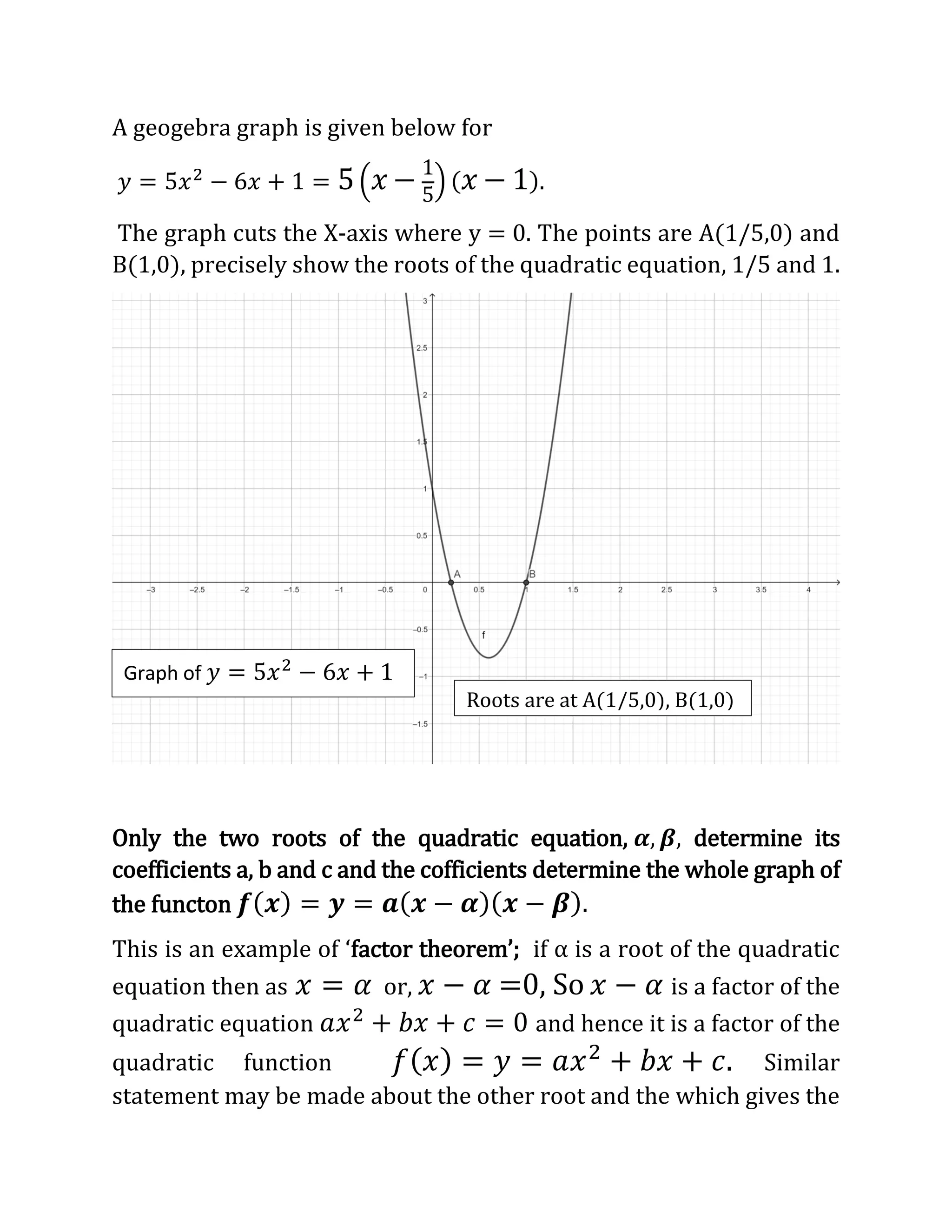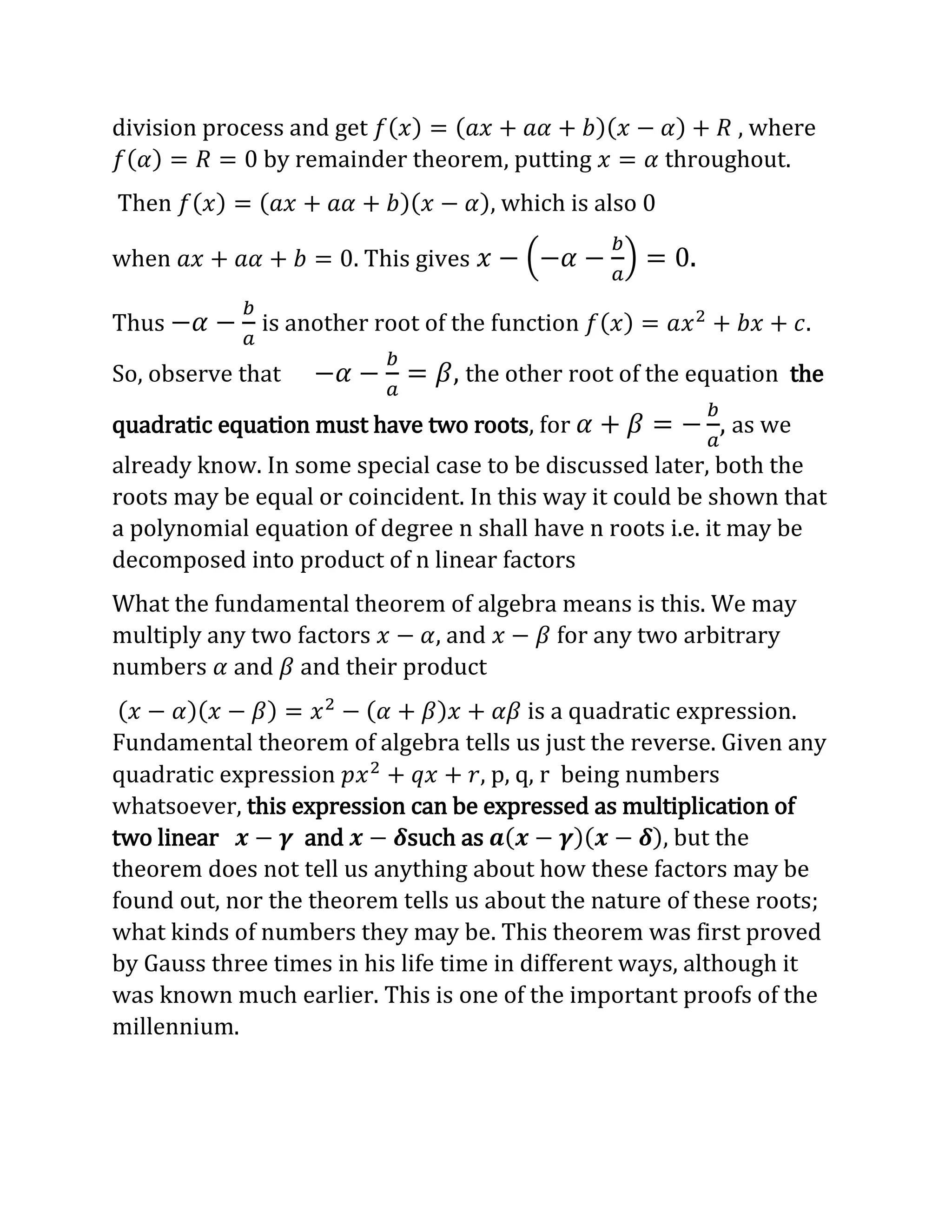The document discusses the differences and relationships between quadratic functions and quadratic equations. It notes that quadratic functions can take any real number as an input, while quadratic equations only have two solutions. The roots of a quadratic equation are also the x-intercepts of the graph of the corresponding quadratic function. The remainder theorem states that the value of a polynomial when a number is substituted for the variable is equal to the remainder when the polynomial is divided by the linear factor corresponding to that number. This connects the roots of quadratic equations to factors of quadratic functions. A quadratic can only have two distinct roots, as having three would mean it has an infinite number of roots.
![QUADRATIC FUNCTIONS
The equation 𝑓(𝑥) = 𝑦 = 𝑎𝑥2
+ 𝑏𝑥 + 𝑐………………..(A)
Is called quadratic function. What is the difference between the
quadratic equation 𝑎𝑥2
+ 𝑏𝑥 + 𝑐 = 0 and the quadratic function
𝑓(𝑥) = 𝑦 = 𝑎𝑥2
+ 𝑏𝑥 + 𝑐 ? The quadratic equation (A) is valid
for only two values of the variable x, the two roots of the equation 𝛼, 𝛽
for which the value of the expression is 0. But for other values of x,
𝑓(𝑥) = 𝑦 ≠ 0.The independent variable x can take any value from
-∞ to ∞ in this case. The interval ] − ∞, ∞[ is called domain of the
function and the range (or codomain of function) is the set of values y
can take, which depends upon the coefficients a, b and c; here it is a
smaller set ,not interval ] − ∞, ∞[ . Obviously the roots 𝛼, 𝛽 depend
upon the coefficients and vice versa.
We could write the above quadratic function like
𝑎𝑥2
+ 𝑏𝑥 + (𝑐 − 𝑦) = 0,or, 𝑎𝑥2
+ 𝑏𝑥 + 𝐶 = 0,where
𝐶 = 𝑐 − 𝑦; so that for each value of the dependent variable 𝒚 the
quadratic function is a new quadratic equation.
For a particular set of values of a, b and c ( say 5, – 6 and 1 for
example) we can write 𝑓(𝑥) = 𝑦 = 𝑎(𝑥 − 𝛼)(𝑥 − 𝛽)……..(B)
(in the particular case 𝑓(𝑥) = 𝑦 = 5 (𝑥 −
1
5
) (𝑥 − 1)).
The graph of quadratic function is a “curve” in the x-y Cartesian plane
whereas the quadratic equation stands for only two points in the
plane (𝛼, 0) and (𝛽, 0), when we put 𝑦 = 0 in the quadratic function.
These two points are the points where the graph of the quadratic
function cuts the X-axis (interception of the curve with X-axis).](https://image.slidesharecdn.com/lecture2quadraticfunctions-210527025230/75/Lecture-1-2-quadratic-functions-1-2048.jpg)





